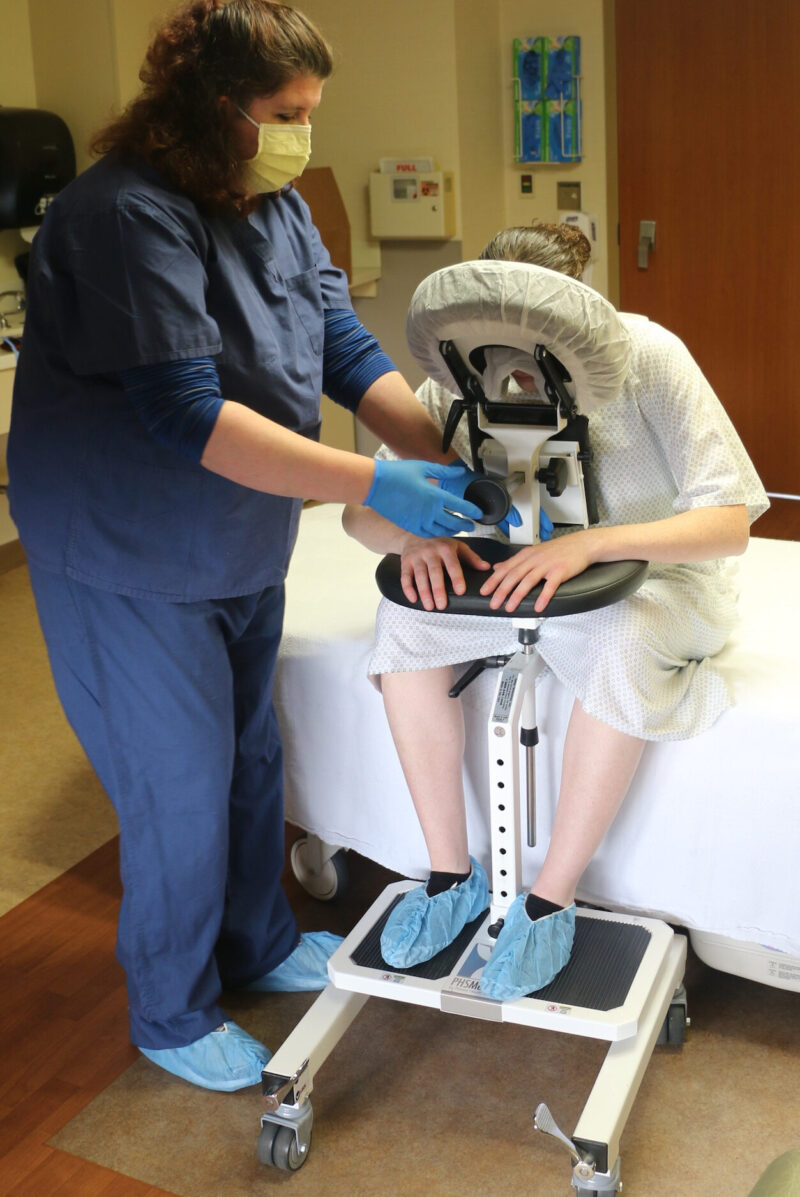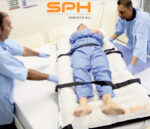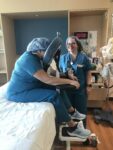Positioning Patients Safely With An Epidural Chair or EPD
Are you tired of straining your back and arms? Do you have frequent musculoskeletal problems from attempting to hold patients in position? It’s time to let the Epidural Positioning Device (EPD) take the load off your neck, back, arms and wrists.
If you’re a nurse, nursing assistant, anesthesia tech, Nurse Manager in Labor and Delivery, or General Surgery this product is indispensable. It provides a secure, stable and comfortable support for patients who need an Epidural, spinal block, lumbar puncture. You might even be in the hospital imaging department holding patients in a similar position during thoracentesis. Imaging departments across the country are discovering that the Epidural Chair or EPD is a comfortable and ideal positioning device to support patients and avoid risk of injury to the ultrasound techs!
What Is an Epidural Positioning Chair?
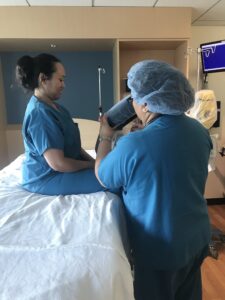
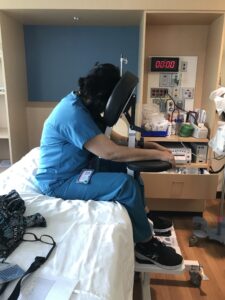 Well, many think it’s a chair but the patient is really sitting on the bed or table. the EPD provides head, chest, arm and feet support for the patient. The EPD is a stable, portable device you can use every time you need to properly position a patient at bedside when preparing for epidural or spinal block. This occurs in many clinical environments both in and out of the hospital. For example, Epidurals are administered almost once per hour on busy labor and delivery floors. With the increase of total joint replacements we’re seeing even more spinal blocks being administered in peri-operative areas. They’re using the EPD too.
Well, many think it’s a chair but the patient is really sitting on the bed or table. the EPD provides head, chest, arm and feet support for the patient. The EPD is a stable, portable device you can use every time you need to properly position a patient at bedside when preparing for epidural or spinal block. This occurs in many clinical environments both in and out of the hospital. For example, Epidurals are administered almost once per hour on busy labor and delivery floors. With the increase of total joint replacements we’re seeing even more spinal blocks being administered in peri-operative areas. They’re using the EPD too.
The old way of manually positioning patients is dangerous. Nurses are often asked to hold the patient in position and with heavier patients this presents an even greater risk to the nurse. You have probably tried stacking pillows, asking the patient to lean forward and arch their back. Then pushing a stool over to support their feet. You might even have your patient lean over a bedside table, but more than likely, that table has wheels that don’t lock and you’ve seen a patient more than once almost slip down to the floor! Now who is going to catch that patient? There’s a better way.
Using the Epidural Positioning Chair for Epidurals, Thoracentesis, Spinal Blocks and other pain management Treatments
Nurses, health care managers and health care facilities need a better solution, and the Epidural Positioning Chair provides it. It’s the standard of care used at leading hospitals to position patients for a variety of procedures without causing dangerous falls, sprains or injuries. It gives patients a more private, dignified way to receive a spinal block or other epidural therapy. Best of all, it makes your job as a caregiver safer.
The device is fully adjustable with a six-position armrest and 180-degree adjustable face rest. It’s easy to bring this device into operating rooms, labor and delivery rooms, pain clinics, birthing rooms, imaging departments, and physical therapy clinics. Keeping the EPD disinfected and clean is easy with disposable covers for the face rest.
Benefits of the EPD
- Keeps patients stable by ensuring proper cervical, thoracic and lumbar flexion for stable alignment.
- Allows you to position patients in a less intrusive, more private way.
- Avoids injuries to health care workers.
- Is wheeled for easy portability anywhere it’s needed.
- Is fully adjustable to fit any patient.
- Improves Patient Satisfaction
Thoracentesis has become a regular procedure both before during and after the COVID-19 epidemic. The epidural positioning device makes it easy to manage this predictable and frequent procedure. According to Mark E Brauner, DO Thoracentesis is generally performed with the patient sitting at the edge of the bed and leaning forward with arms resting on a bedside table. Side lying positions are reserved for those patients unable to sit. Our ultrasound techs need a safe work environment as well! The EPD provides safe support for patients who may experience syncope from a vasovagal response during thoracentesis. Leading Pulmonologists at the City of Hope Medical Center in California are using the EPD for all Thoracentesis procedures. The Techs and the patients love it too.
Studies on pregnant women receiving an epidural found women felt more comfortable and secure when their health care providers used a positioning device. Patient satisfaction went up substantially when compared to patient satisfaction when the women received treatment without the device.
Keeping our Healthcare Workers Safe
Back Injuries, Strains and other MSD’s are a serious concern among health care workers. According to the Association of Perioperative Registered Nurses (AORN), half of all nonfatal occupational injuries experienced by perioperative nurses are musculoskeletal and more than a quarter of these are back injuries.
The average preoperative room is a high-risk area that can cause many injuries to staff:
- Shoulder, back and lower leg sprains from lifting patients.
- Trips and falls from cords, wires and slippery floors.
- Muscle strains from pushing around heavy equipment.
- Leg and back strain from hours of constant motion.
- Neck and Back injuries from frequent and predictable lateral transfers.
The EPD addresses many of these issues. It’s no wonder the device has become standard equipment in leading hospitals including Duke University Hospital, John’s Hopkins, Mayo Clinic, Kaiser Hospitals and VA Medical Centers.
This device is a win for everyone, and it will soon become an invaluable member of your L&D, perioperative, or Imaging team.
Please contact SPH Medical for more information or to request a quote.
If you’re ready to improve patient and staff safety this device can make an immediate and positive impact. SPH Medical is a national organization focused on Nursing and frontline caregiver safety.

